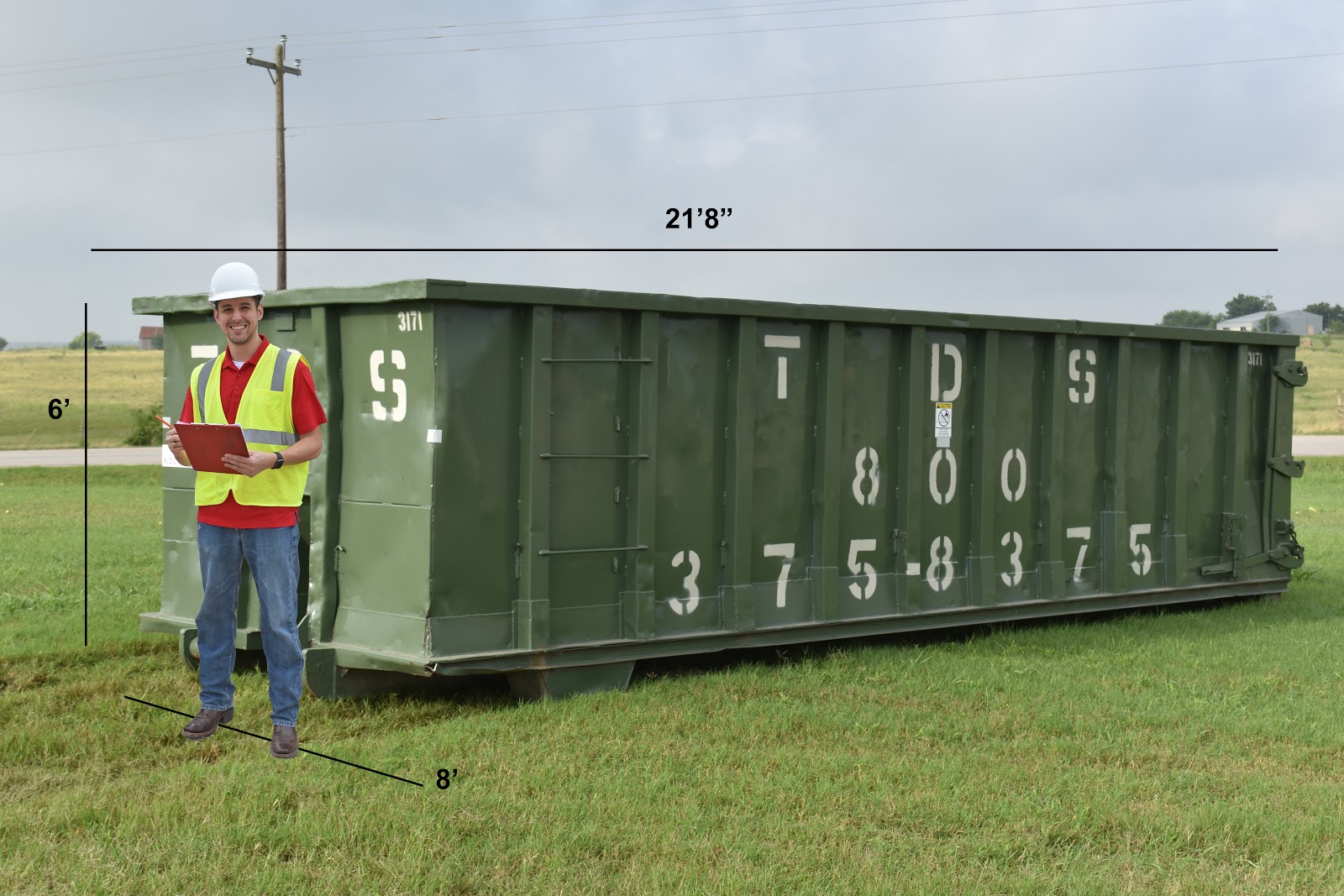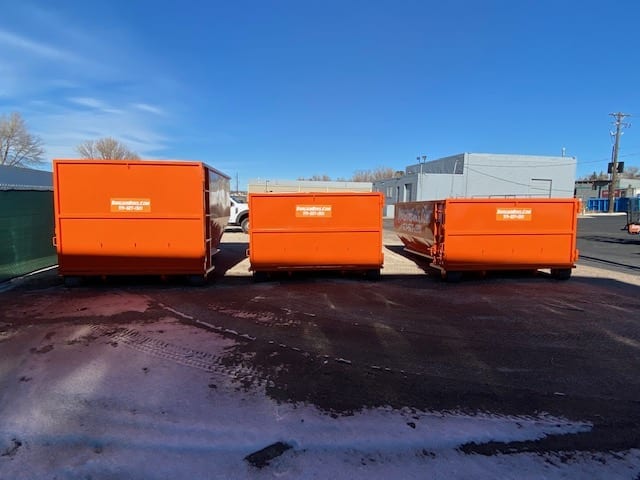Roof tear-off on the calendar? You’re gonna need a dumpster—but not just any size. Too small and you’ll be stuck with a pile of shingles and nowhere to toss ‘em. Too big and you're throwing money in the trash (literally).
The sweet spot depends on your roof's size, shingle type, and how many layers you’re stripping. Don’t worry, this isn’t a guessing game.
We’ll break it down by square footage, weight limits, and real-life examples so you know exactly what to order. Quick, clear, and zero fluff—because the only thing heavier than shingles is dealing with the wrong dumpster.
What Size Dumpster Do I Need for a Roof?
Most roofs need a 10 to 30-yard dumpster. A small 1,500 sq ft roof? Go 10 or 15. Bigger homes with double layers? 20 or 30 is safer. Always factor in layers and shingle weight.
Key Takeaways
- Most roofs need a 10 to 30-yard dumpster, depending on size and shingle layers.
- One layer of asphalt = less space, multiple layers = more weight.
- Always measure your space and check local weight limits.
- Book early, round up on size, and avoid overfilling to dodge extra fees.
Factors That Affect Dumpster Rental Size for Roofing Projects
- Roof Size (aka How Big Is Your Lid?)
Bigger roof, bigger dumpster. Simple math. Most roofers measure in squares (100 sq ft each), so if your roof is 20 squares, you’ll likely need a 15 or 20-yard dumpster.
- Shingle Type and Layers
One layer of asphalt shingles? Chill. Two or three? That adds serious weight fast. Multiple layers stack up quickly, so don’t skimp on size or you’ll be paying overweight fees.
- Material Weight

Asphalt shingles are heavy, but if you're tossing tile or slate, that’s next-level. These bougie materials weigh more and fill a dumpster faster than you’d think.
- Local Weight Limits
Every dumpster has a weight cap. Go over it and you'll get hit with fees. Check your hauler’s limits before booking. Your wallet will thank you.
- Access and Drop-Off Space
Tight driveway or awkward alley? It might limit the dumpster size you can actually fit. Measure the space before you rent. No one wants to block the neighbor’s Prius.
- Bonus Tip
Planning a full tear-off? Add a 10-20% buffer room. Always better to have a little extra space than be stuck mid-job calling for a second dumpster.
Recommended Dumpster Sizes by Roof Size
- 10-Yard Dumpster: Small Roofs, Single Layer
Got a small house or garage with one layer of shingles? A 10-yarder can handle around 1,500 square feet. Think ranch-style homes or lightweight projects. Anything more, and you’re probably pushing it.
- 15-Yard Dumpster: Mid-Size Homes
If your roof clocks in around 2,000–2,500 square feet, this is your move. It gives you breathing room without overkill. Especially handy for homes with two layers of shingles.
- 20-Yard Dumpster: The Safe Bet
Most residential roofing projects land here. It handles up to 3,000 square feet of single-layer shingles or less if you're stacking layers. Solid pick for asphalt jobs on average-sized homes.
- 30-Yard Dumpster: Large Roofs or Heavy Shingles
Running a big job with tile or multiple layers? This one’s the tank. It holds more weight and square footage, so you don’t risk overload fees or call-backs for a second bin.
- Pro Tip
Don’t eyeball it. Shingle weight adds up fast. Always ask your roofer or dumpster guy before locking in a size. Better to flex up than pay for two trips.
Mistakes to Avoid When Renting a Dumpster for Roofing
- Going Too Small
Trying to save cash with a smaller dumpster? Bad move. You’ll max it out halfway through the job and pay more for a second one.
- Ignoring Shingle Weight
Shingles aren’t light. Especially with two or three layers. If you don’t factor in weight, you’ll catch extra fees fast.
- Overfilling the Bin

Filling it past the rim might feel efficient, but drivers won’t haul it. You'll either pay more or be stuck unloading.
- Skipping Permits or HOA Rules
Some areas need a permit or HOA sign-off. Ignoring that? Cue awkward convos and possible fines.
- Not Checking Access Space
If the dumpster can’t fit your driveway or job site, it’s useless. Measure first, rent second.
- Booking Too Late
Roofers ready, bin’s not? That’s a delay you don’t want. Schedule your drop-off early so you're not left waiting.
Tips for Choosing the Right Dumpster for Your Roof
- Talk to Your Roofer
They’ve seen every roof situation under the sun. Ask what size dumpster they recommend based on your roof’s square footage and layers.
- Leave Room for Extras
Always round up a little. Unexpected weight or a bonus shingle layer? Better to have space than scramble mid-job.
- Watch the Weight Limit
Don’t just look at size. Weight matters too. Go too heavy and you’ll pay extra, even if the bin isn’t full.
- Measure Your Space
Before you book, make sure the dumpster fits your driveway or curb. Tight squeeze? Ask for placement options.
- Book Early
Dumpster availability can be a joke during busy seasons. Lock it in ahead so your project runs smoothly.
Frequently Asked Questions
1. What size dumpster do I need for a 1,500 sq ft roof?
Usually, a 10- or 15-yard dumpster gets the job done. Just make sure you're only tossing one layer of asphalt shingles.
2. Can I use a 20-yard dumpster for shingles?
Absolutely. It's a solid pick for mid to large roofs. Holds around 3,000 square feet of single-layer asphalt before things get heavy.
3. What happens if I overfill the dumpster?
Not a vibe. If it’s too full or too heavy, the hauler might leave it behind or hit you with extra fees. Keep it below the rim and within the weight limit.
Conclusion
Picking the right dumpster isn’t rocket science, but it does take a little planning. Roof size, shingle type, and weight limits all play a part.
Talk to your roofer. Chat with the rental company. Round up instead of guessing low.
A sizeable dumpster keeps your project moving and your yard free of chaos. Book early, measure your space, and stay under the rim.
That’s the cheat code for a smoother roof job.

